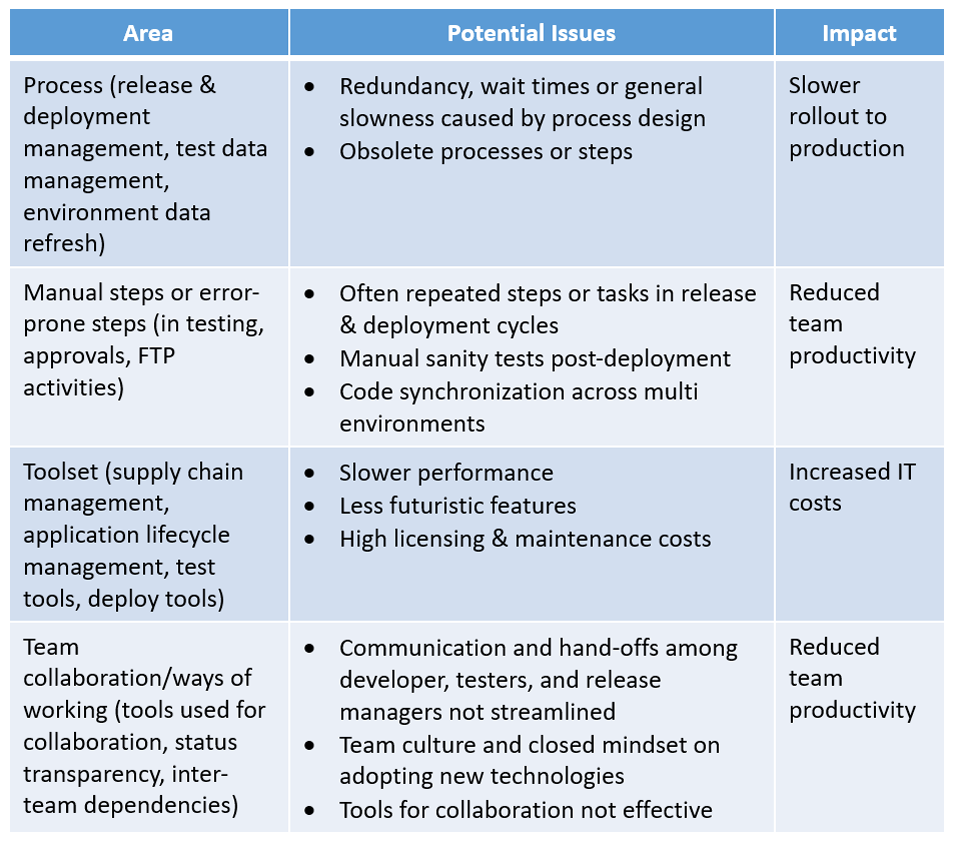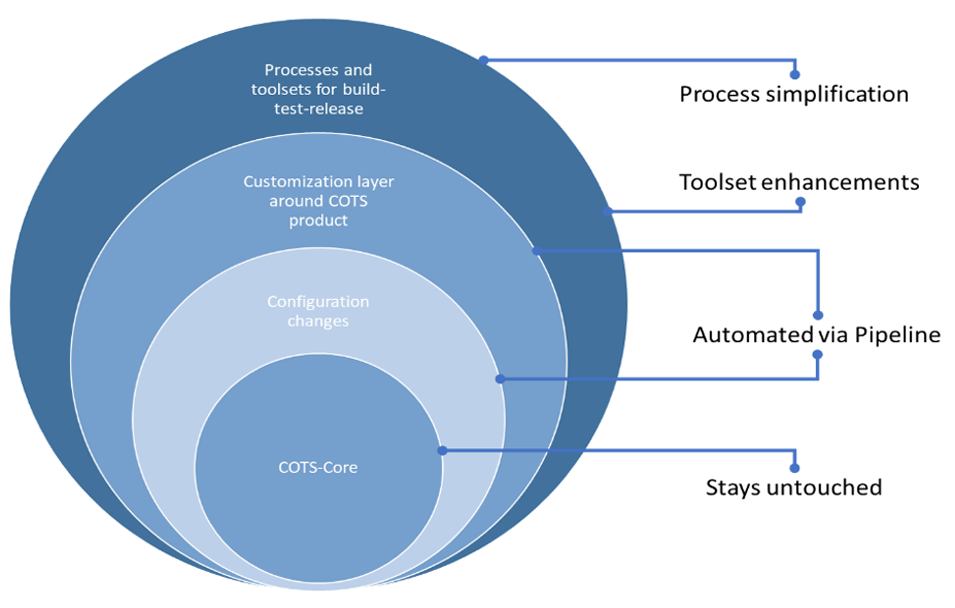Accelerate Time to Market The Power of CI/CD for Telecommunication Service Providers
New technologies like 5G, plus constantly changing consumer demands, are forcing telecommunication service providers (TSPs) to create and rollout features faster and faster. For relatively recent applications developed with contemporary digital technologies, new features and functionalities can proceed relatively easily. But for legacy applications – typically commercial off-the-shelf (COTS) systems – rolling out new features can be a slow and tedious process which eventually results in slower rollout of new features to end customer.
Traditionally, TSPs have preferred COTS solutions for core business functions like billing, mediation, customer relationship management (CRM), order management, and others. COTS solutions, after all, are readily available, fulfill standard requirements, and, after their initial implementation, can be customized to serve an enterprise’s unique business requirements, thus reducing dependency on the solution vendor.
However, new feature releases will involve configuration changes. For example, a change in pricing plans or charge aggregation logics will necessitate a change in billing system; localized customizations could change the billing adaptor layer. This leads to problems in an environment where business demands are evolving rapidly, with many TSPs finding it difficult to keep their systems up to date. Moreover, creating multiple development environments to cater to multiple change cycles leads to additional maintenance headaches.
To work with customizations and configuration changes and still deliver production updates faster for a legacy COTS setup, Wipro recommends a comprehensive improvement strategy that is integrated with and centered around a fully automated continuous integration/continuous deployment (CI/CD) pipeline.
Understand the Landscape
Here’s a good first step toward understanding the scale and size of the problem of rolling out changes to COTS solutions: Analyze the enterprise’s landscape and existing methodology. Wipro’s experience in building solutions for the telecommunications domain has illuminated some of the potential challenges and their impacts, detailed in the chart below. These problems negatively impact productivity and hinder the business goal of faster features rollout.

Adopt a CI/CD Approach
Once the landscape and potential bottlenecks are understood, TSPs with a legacy COTS environment should consider adopting a fully automated CI/CD approach to manage customizations and configuration changes and still achieve faster production delivery.
In broad terms, this CI/CD approach solution involves three stages:
Stage 1: Process optimization
Start by evaluating processes such as release management, environment data refresh, and test management to identify and remove redundancies. Next, optimize time-consuming steps in these processes such as wait time for manual interventions or a complex process which can be simplified into a smaller number of steps
Stage 2: Tools selection and enhancement
A reliable, user-friendly tool that supports integration to pipeline is essential to a CI/CD approach. Examples include:
Stage 3: Build a fully automated CI/CD pipeline for all environments
The CI/CD pipeline integrates all the tools and processes to enable a single-click, end-to-end delivery of changes to production.
Go to Market Faster
An integrated CI/CD pipeline, along with process improvements, represents a holistic solution that can enable faster and smoother rollouts of changes to production. Providing an additional layer of quality and security checks is a step to saving a lot of reactive effort when encountering future issues.
The steps outlined above address concerns posed by most of the visible layers of a COTS set-up. The exception is the core code of COTS products, which remains with the product vendor and is expected to evolve according to CI/CD demands. But the rest of the layers, which are under the purview of TSP, can be managed as follows:

Fig 1: Layers to legacy COTS application with potential accelerators for enabling faster rollout
Next Steps
Enterprises looking to accelerate deployment of COTS revisions or enhancements should consider the CI/CD methodology. But before embarking on such an endeavor, consider these prerequisites for success:
The CI/CD approach can be a powerful way to roll out better software and do it faster. For example, Wipro recently worked with T-Mobile Netherlands to bring about one such transformation for the company’s BSCS Billing application, which has generated significant improvements.
Implementing a CI/CD pipeline for a legacy application such as BSCS (20+ years old) was only possible with the skills and know-how of Wipro, being a big IT company
T-Mobile Billing DevOps team
Industry :
